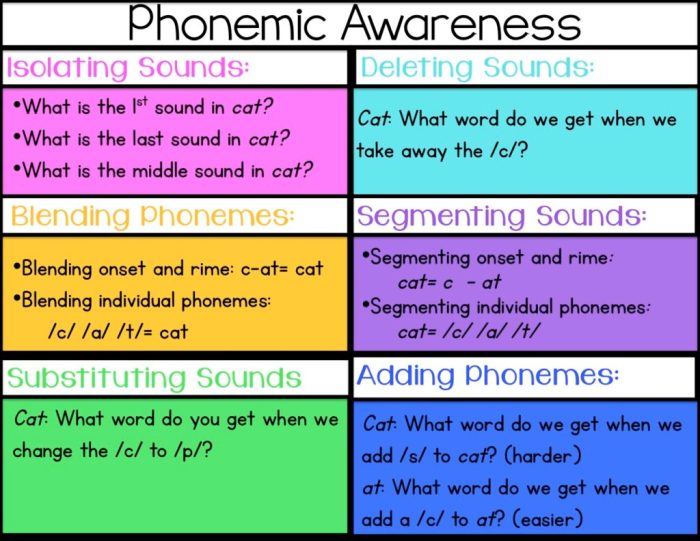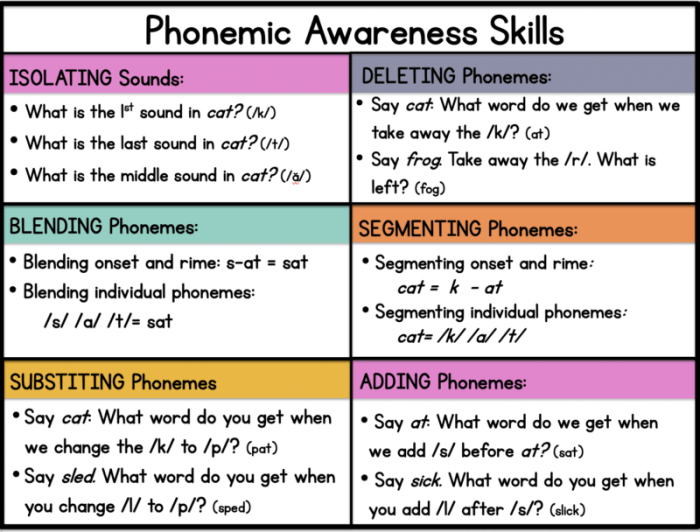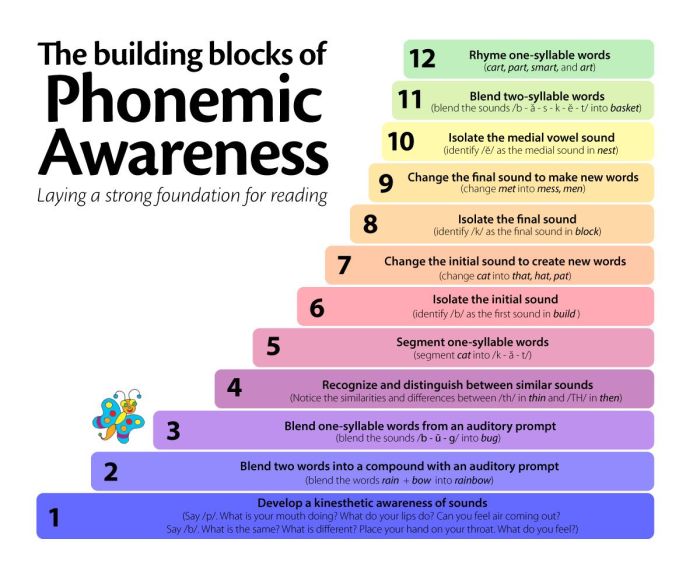The use of nonsense words for phonemic awareness activities is: – The use of nonsense words for phonemic awareness activities is a valuable tool for developing phonological skills in children. Nonsense words are words that do not have any real-world meaning, such as “blug” or “dax.” They are often used in phonemic awareness activities because they allow children to focus on the individual sounds in words without being distracted by the meaning of the word.
Research has shown that using nonsense words can improve phonemic awareness skills, which are essential for learning to read and write. One study found that children who were taught to manipulate nonsense words showed significant gains in phonemic awareness skills compared to children who were not taught to manipulate nonsense words.
Introduction to Nonsense Words

Nonsense words, also known as pseudo-words or non-words, are letter combinations that resemble real words in terms of their structure but do not carry any meaningful lexical or semantic content. They are intentionally crafted to lack any recognizable meaning or connection to the lexicon of a particular language.
In the context of phonemic awareness, nonsense words play a crucial role in developing students’ ability to identify and manipulate individual sounds within words. By using nonsense words, educators can eliminate the influence of semantic and lexical knowledge, allowing students to focus solely on the phonological aspects of language.
Benefits of Using Nonsense Words: The Use Of Nonsense Words For Phonemic Awareness Activities Is:

Incorporating nonsense words into phonemic awareness activities offers several significant benefits:
- Enhanced Phonological Awareness:Nonsense words isolate the phonological components of language, enabling students to develop a deeper understanding of sound patterns and relationships.
- Improved Phonemic Segmentation:Nonsense words encourage students to break down words into individual sounds, fostering their ability to segment words into phonemes.
- Increased Phonemic Blending:By manipulating nonsense words, students practice combining individual sounds to form words, improving their phonemic blending skills.
- Research Support:Numerous studies have demonstrated the effectiveness of using nonsense words in phonemic awareness instruction. For example, a study by Bradley and Bryant (1985) found that children who received training with nonsense words showed significant improvements in phonemic awareness and reading ability.
Methods of Incorporating Nonsense Words
Educators can utilize nonsense words in a variety of ways to enhance phonemic awareness activities:
- Nonsense Word Games:Design games that involve manipulating nonsense words, such as “Nonsense Word Bingo” or “Nonsense Word Charades.” These games provide a fun and engaging way for students to practice phonemic awareness skills.
- Nonsense Word Dictation:Read nonsense words aloud and ask students to write them down. This activity helps students develop their ability to decode and encode nonsense words.
- Nonsense Word Manipulation:Provide students with nonsense words and ask them to perform various manipulations, such as adding, deleting, or changing sounds. These exercises enhance students’ phonemic segmentation and blending skills.
Considerations for Using Nonsense Words

While nonsense words are a valuable tool, there are a few considerations to keep in mind:
- Potential Challenges:Some students may initially struggle with nonsense words due to their lack of meaning. It is important to provide ample support and scaffolding.
- Gradual Introduction:Introduce nonsense words gradually, starting with simple words and gradually increasing the complexity as students become more proficient.
- Avoid Overuse:While nonsense words are beneficial, they should not be overused. Too much exposure can lead to students becoming overly reliant on nonsense words and neglecting the development of meaningful vocabulary.
Extensions and Applications

Beyond phonemic awareness, nonsense words can be used in various other educational contexts:
- Literacy Development:Nonsense words can be used to introduce new letter combinations, practice decoding and encoding skills, and enhance vocabulary development.
- Second Language Learning:Nonsense words can be used to help learners develop phonemic awareness in a new language, particularly when the sounds and spelling patterns differ from their native language.
- Cognitive Research:Nonsense words are often used in cognitive research to study the brain’s processing of language and sound.
Expert Answers
What are nonsense words?
Nonsense words are words that do not have any real-world meaning, such as “blug” or “dax.”
How can nonsense words be used to improve phonemic awareness?
Nonsense words can be used to improve phonemic awareness by helping children to focus on the individual sounds in words without being distracted by the meaning of the word.
What are the benefits of using nonsense words for phonemic awareness activities?
The benefits of using nonsense words for phonemic awareness activities include improved phonemic awareness skills, which are essential for learning to read and write.